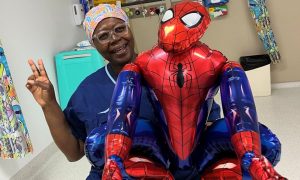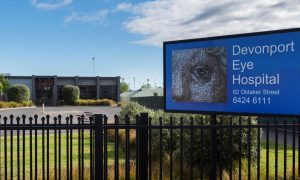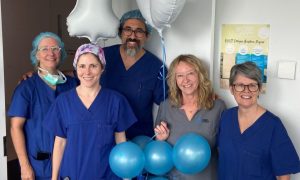Cura Group navigation
Hospital information
General information
Our procedures
Use the expand and collapse feature below to find more information, and patient information videos about the procedure you are undergoing.
A blepharoplasty is a procedure which removes excess or sagging skin from upper and/or lower eyelids. The surgery is usually performed for cosmetic reasons however; it can improve sight in patients whose eyelids are obscuring their vision.
A canthoplasty is a surgical procedure that tightens the area around the eye in order to correct a drooping appearance, and create an upward slant in the outer corner of the eye.
A Dacryocystorhinostomy (DCR) is an operation performed to unblock the nasolacrimal duct (tear duct).
Ectropion is a medical condition where the eyelid folds outward. Corrective surgery involves the removal of a small piece of the fold to tighten the muscles in the area.
Entropion is a medical condition where the eyelid folds inward. Corrective surgery involves the removal of a small piece of the fold to tighten the muscles in the area.
Excision of lesions is a procedure to remove growths such as lesions, moles and tumours from the skin, sometimes accompanied by frozen sections and followed by sutures or a graft. The most common reason for undertaking this procedure is for the removal of skin cancers such as Basal Cell Carcinoma which is the most common skin cancer on the face.
Cataract surgery is the surgical replacement of a cloudy lens with an artificial intraocular lens (IOL) implant to restore vision. The cloudy lens is broken up and removed with an ultrasound probe through a very small incision in the eye, and the artificial lens is inserted.
An ICL procedure involves the insertion of an implantable contact lens in the front chamber of the eye, leaving the natural lens intact. The procedure, undertaken to correct short- or long-sightedness, is often used as an alternative to corrective laser procedures.
Intravitreal injections are used in the treatment of Age-Related Macular Degeneration. The Injections work by inhibiting the growth of abnormal blood vessels at the macula, and help to prevent leakage of these blood vessels.
Pneumatic Retinopexy is a procedure in which retinal detachment is treated through the injection of a gas bubble.
A pterygium is a growth of blood vessels and fibrous tissues covering the surface of the eye due to over-exposure to sunlight over an extended period of time. A pterygium is treated with a surgical excision and an auto-conjunctival graft.
Squint surgery involves tightening the extraocular eye muscles to change the eye position in order to correct a turned eye.
Vitrectomy is a surgery which removes the vitreous gel from the eye to assist in the repair of retinal detachments, macular holes and retinal membrane surgeries.
Dental restoration is a broad term used to encompass any dental procedure, artificial substance or structure with protects the mouth’s ability to eat and chew. The most common form of dental restoration are dental fillings.
When wisdom teeth have the potential to cause problems or become impacted, they may be removed surgically. In the procedure, the surgeon makes a small incision and extracts the tooth with forceps.
A tooth extraction is the removal of a tooth from the dental alveolus (socket) in the alveolar bone.
Endoscopic carpal tunnel release surgery is the use of an endoscope to cut the transverse carpal ligament. The endoscope is usually inserted through a small incision in the palm.
Carpal tunnel release is a surgery used to treat carpal tunnel syndrome. During the surgery, the surgeon will cut the carpal ligament to relieve pressure on the median nerve, and make more space for the nerve and tendons.
Dupuytren’s contracture is the development of a fibrous connection between the finger tendons and the skin of the palm resulting in a forward curvature or ‘clawing’ of one or more fingers. Treatment for Dupuytren’s contracture includes needling, injections and surgical procedures to sever the tissue causing the contracture.
Synovectomy is the surgical removal of the inflamed synovium (the tissue lining the joint), and is usually performed with an arthroscopy. The surgery is usually performed in cases of inflammatory arthritis where there is swelling causing pain, or limiting the range of motion of the digits and thumb.
Ulnar Shortening Surgery involves cutting the ulnar bone in the forearm, removing a thin slice and then fixing the bone together with a plate and screws.
Commonly referred to as a ‘tummy-tuck’, an abdominoplasty is a cosmetic or reconstructive surgery to remove excess skin and fat from the abdomen, and to tighten the stomach muscles.
Breast augmentation is the surgical increase of the size of woman’s breasts, usually through the use of breast implants.
Breast reduction surgery also known as reduction mammoplasty is a procedure to reduce the size of large breasts through the removal of excess fat, tissue and skin from the breasts.
The forehead lift or browlift is performed to correct sagging eyebrows or improve the lines of a person’s forehead.
An excision of lesion procedure is the surgical removal of a skin lesion. Skin lesions can be any lumps on the skin including moles, cysts, warts or skin tags.
Facelift, also known as meloplasty or rhytidectomy, involves surgical procedures that tightens and removes drooping skin.
Gynaecomastia surgery aims to remove the excess breast tissue, fat and skin from the male chest. Surgery usually consists of a combination of liposuction followed by glandular excision.
Labiaplasty surgery is a procedure which reduces and reshapes excess labia minora tissue of the vagina.
Rhinoplasty is a surgical procedure which improves the appearance or function of the nose by reshaping the nasal bone and cartilage. It is performed by either an Otolaryngologist – head and neck surgeon, Maxillofacial surgeon, or Plastic surgeon.
- Follow Adelaide Day Surgery on social





